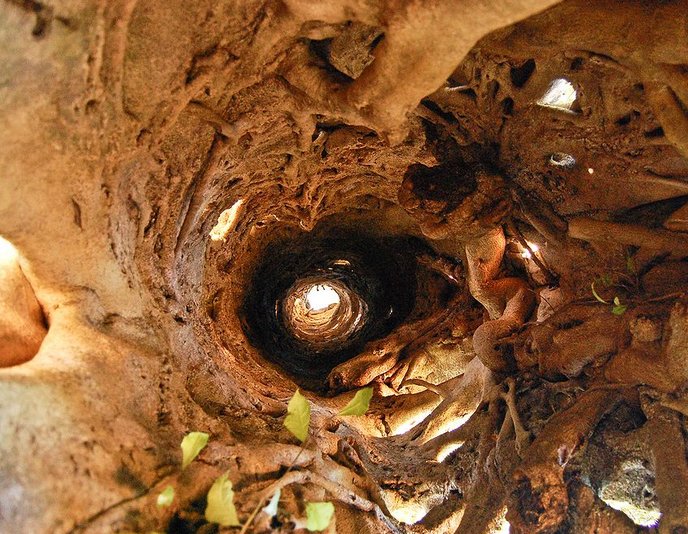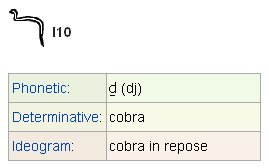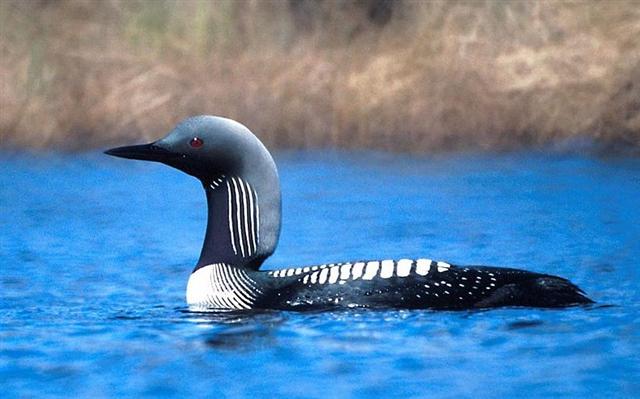Line Cb2 should also
contain references to
the 4th Hindu station,
Rohini, ruled by
Aldebaran. And here we
can count with 13 days
as the distance from the
1st day of the Pleiades:
|
1 |
Ashvini |
β and γ
Arietis |
Horse's
head |
27 |
|
wife
of the Ashvins |
Sheratan
and Mesarthim |
April 17 |
|
2 |
Bharani |
35, 39,
and 41 Arietis |
Yoni,
the female organ of reproduction |
41 = 27 + 14 |
|
the
bearer |
Musca
Borealis |
May 1 |
|
3 |
Krittikā |
M 45
Tauri |
Knife or
spear |
55
= 41 +
14 |
|
the
nurses of Kārttikeya |
The
Pleiades |
May 15 |
|
4 |
Rohini |
α Tauri |
Cart or
chariot, temple, banyan tree |
68 = 55
+ 13 |
|
the red
one |
Aldebaran |
May 28 |
Aldebaran is a red star and the banyan is a
remarkable tree, especially when old:

Possibly the World Tree when old was
imagined as a great 'banyan'. The glyph type niu
could then correspond not only to the World Tree in
flower (e.g. the Oak or the Ceiba), but also to the Banyan - the World Tree
like a hollow
old 'mountain':
|
Sheratan
2 |
3 |
4 |
|
May 18 |
19 |
20 (140) |
 |
 |
 |
|
Cb2-8 |
Cb2-9 |
Cb2-10 |
|
Niu |
moe te goe |
|
Menkhib
(57.6) |
Zaurak
(58.9),
λ Tauri
(59.3) |
ν Tauri
(59.9) |
|
November 18 |
19 |
20
(324) |
|
Syrma 3 |
4 |
5 (188) |
|
Dschubba (241.7), η Lupi
(241.9), υ Herculis (242.3), ρ Cor. Borealis
(242.4), ι Cor. Borealis (242.5) |
ξ Scorpii (242.7),
Acrab, Jabhat al Akrab (243.3), θ Lupi, Rutilicus
(243.5) |
16h
(243.5) |
|
Marfik Herculis (243.7), φ Herculis (243.8) |

The stars
λ and
ν Tauri have been assigned such Greek letters which - based
on their bronze-age predecessors - evidently were
symbolizing a dark time, i.e. when Old Sun was 'looming ahead' (ν) or was
hidden (λ) under a cloth (Egypt) - or under a tripod cooking bowl
(Arabia).
Mago in
Gb2-10 could refer to Antares, which in the night was seen
at the other end of the sky, but Metoro said the glyph
referred to 'the Milky Way' (Goe), which was
'reclining' (moe), as if in 'repose':
|
Moe
To sleep,
to lie at full length, to dream, to
brood, to place, to cohabit; moe atu, to
leave off, to desist; moe atu ra, to
adjourn, to postpone; moe hakahepo, to
talk in the deep; moe aherepo,
somnambulist, sleepwalker; moe
hakataha, to sleep on the side; moe no,
to oversleep, concubinage; moe tahae, to
be a light sleeper; moe tahaga, a
sleeper; moe vaeahatu, moe hakaroa,
to sleep sprawling; rava moe, to sleep
sound; ariga moe ki raro, to lie
flat on the ground; tae moe, bachelor;
hakamoe, to brood, to fold the wings; to
reserve, to lay up; to struggle. P Pau.: moe,
sleep. Mgv.: moe, sleep, to lie down,
coitus, to shut the eyes. Mq.: moe, to
sleep, to lie down; haŠmoe, to set down
on the ground. Ta.: moe, to sleep, to lie
down. Moea raruga, lying flat. Moeaivi,
thin. Mq.: ivi, haŠivi, id. Ta.:
ivi, id. Moega, mat. Pau.:
moehega, bed. Mgv.: moega, a sleeping
mat. Mq.: moena, moeka, mat, floor
cloth, bed. Ta.: moea, bed. Moemata,
to sleep with the eyes open; mea moemata,
phantom. Moemoea, a dream, vision;
tikeahaga moemoea, apparition by
night. T Mgv., Mq., Ta.: moemoea, dream.
Churchill.
Mgv. Moemoe, to steal,
to purloin at a food distribution. Mq.:
moemoe, to seize, to grasp. Churchill.
Ta.: 1. Moemoe,
ambush. Ha.: moemoe, id. 2. Moemoe,
Phyllanthus simplex. To.: mohemohe, a
tree. Churchill.
Mq.: Moehu, exiled,
banished, prisoner of war. Ma.: morehu, a
survivor. Churchill. |

Marfik ('the Elbow') is
κ at the right
elbow of Hercules and this star should be added to my κ table:

|
Tejat Prior (η Gemini) |
0.2 |
κ Aurigae (93.6) |
|
... |
| |
|
κ Velorum (141.5) |
| |
|
κ Leonis (141.6) |
|
... |
|
Acrab (β Scorpii) |
0.2 |
κ Herculis (243.5) |
|
η Sagittarii |
0.6 |
κ Lyrae (277.5) |
|
Gredi (α Capricorni) |
0.9 |
κ Sagittarii (308.1) |
|
Bunda (ξ Aquarii) |
1.2 |
κ Capricorni (328.7) |
| |
|
κ Aquarii (342.7) |
|
Revati (ζ Piscium) |
0.7 |
κ Tucanae (17.6) |
| |
|
Algol (β Persei) |
0.3 |
κ Persei (46.2) |
Possibly Acrab could be the
reason why there is a mago in Cb2-10.
This star is represented in the 17th Hindu station:
|
14 |
Chitra |
α Virginis |
Bright jewel or pearl |
|
15 |
Svāti |
α Bootis |
Shoot of plant, coral |
|
16 |
Visakha |
α, β, γ and ι Librae |
Triumphal arch, potter's wheel |
|
17 |
Anuradha |
β, δ, and π Scorpii |
Triumphal archway, lotus |
|
18 |
Jyeshtha |
α, σ, and τ Scorpii |
Circular amulet, umbrella,
earring |
|
19 |
Mula |
ε, ζ, η, θ, ι, κ, λ, and μ
Scorpii |
Bunch of roots tied together,
elephant goad |
However, my
κ stars are
(unless the figure is upside down) at
the end of a constellation, while the
preceding star which is rising only a little
earlier in another constellation
- or at least in another asterism (e.g. Algol) -
should be at the
beginning of the new constellation.
As
Hevelius has drawn it there could
alternatively - and more likely -.be a
'companion' star for Marfik at the head
of the Serpent and I need to update my
star list with more stars in this
constellation. But that must wait
until later.
17h (Anuradha) - 12h = 5h instead of
the expected 4h
(as in the 4th Hindu station) and the
constellation at the other end of the
sky should therefore not be Scorpio but Libra.
This constellation would be quite in harmony with the
balanced state of the watery mirror of
the 'Old Loon'. The quiet surface for
gliding softly across the water
resembles the necessarily quiet state of
the horizontal beam of a balance.


|






